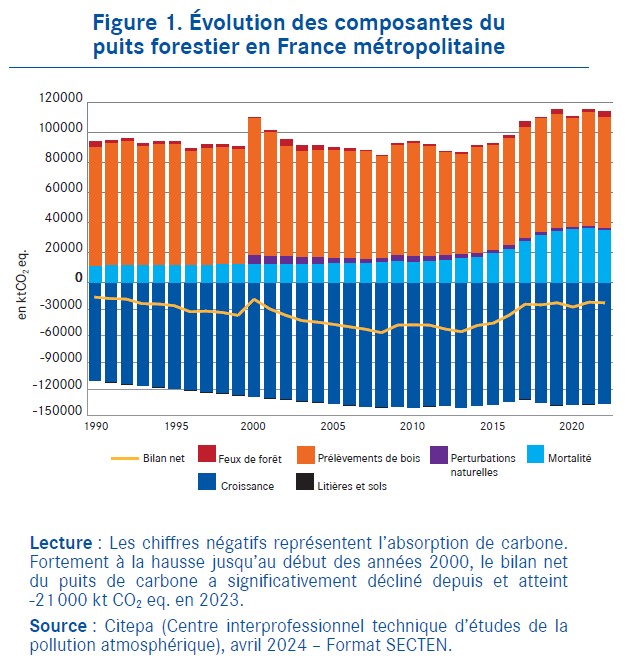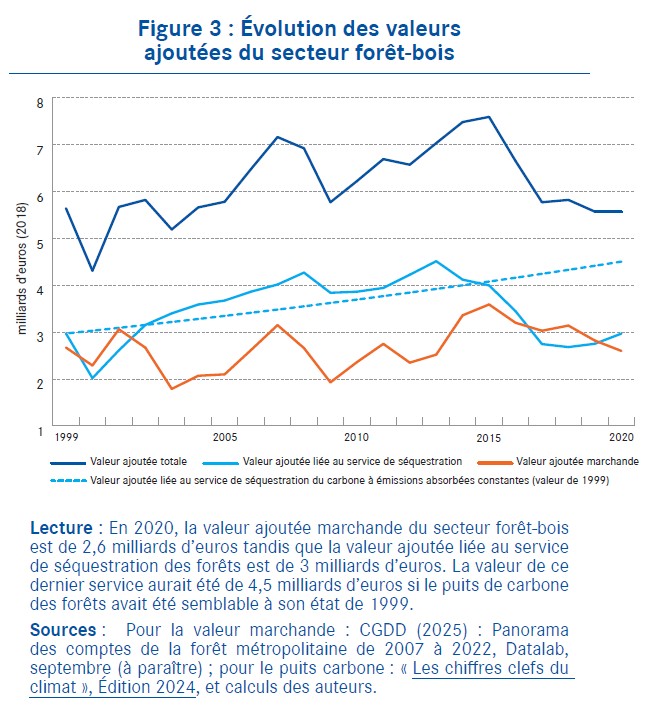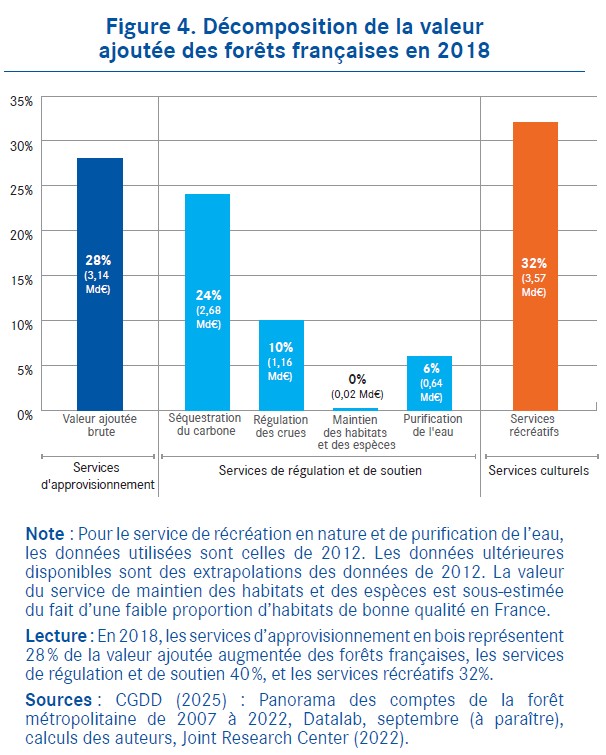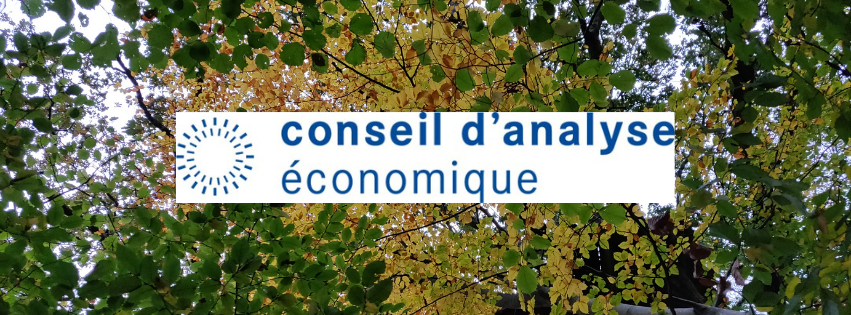Valuation of ecosystem services: economic and climate approaches
The latest note from the Economic Analysis Council (CAE) proposes an innovative method for integrating the true value of forest services into national accounts and attempting to steer public policy in a more appropriate direction. This approach aims to reveal the costs and benefits of action in favour of forests, so that their importance is no longer underestimated.
References and sources: Note of conseil d’analyse économique, n° 86, septembre 2025, "Compléter les comptes nationaux pour que l’arbre ne cache plus la forêt", Dominique Bureau, Philippe Delacote, Fanny Henriet, Alexandra Niedzwiedz.
Forests, pillars of the climate... under threat
France's metropolitan forest is an essential carbon sink, absorbing an average of 10% of national greenhouse gas emissions. In 2023, the carbon stock of trees, dead wood, litter and forest soils amounted to 2.8 billion tonnes, which is growing steadily: in recent years, the forest has stored an average of 39 million tonnes of CO2 per year. Without this ecological service, the country's net emissions would automatically be 10% higher each year.
However, this role has been undermined by the climate crisis. The intensification of droughts, storms and diseases has doubled tree mortality and slowed their growth by 4% over the last decade, halving the carbon sink's sequestration capacity. Although forests still absorb more carbon than they emit, their contribution to the climate is now uncertain in the medium term, threatening to make French forests net emitters by 2050 if there is an increase in timber harvesting that is not geared towards long-term use.

Assessing hidden benefits: from carbon to co-benefits
Until now, only market services, such as forestry (maintenance and commercial exploitation of forests), have been taken into account in GDP calculations, representing €3.9 billion (0.15% of GDP in 2022). However, the overall value of forests goes far beyond this: when carbon sequestration and other ecosystem services are included, the total added value of the sector reached €11.2 billion in 2018, more than three times its strictly commercial value.

The valuation of carbon sequestration requires the definition of a reference price: the CAE uses a social cost of carbon (SCC) of €185/tCO2 avoided, adjusted for the non-permanence of storage (factor of 0.4). This allows for the risk – exacerbated by climate change – that a tonne of temporarily stored carbon may be released back into circulation during extreme events or through forest management.
Key fact: the socio-economic value of carbon sinks is equivalent to that of forestry. Ignoring this service amounts to skewing policy choices to the detriment of the climate and the preservation of carbon sinks.
Valorisation systems and levers to strengthen the climate role of forests
Tools such as the Low Carbon Label – Forestry section already enable forestry projects to be financed through the sale of carbon credits (see our projects here).
Substitution effects are just as important and are integrated into the Low Carbon Label: wood used in construction or energy can replace materials (concrete, steel) or energy sources that emit more CO₂, thereby optimising the climate impact of the sector.
Technical monitoring and meticulous evaluation of projects, as practised by the Low Carbon Label, are proof of concept for the fair integration of climate and environmental benefits into public policy.
It is also recommended that a national commission dedicated to the traceability of wood and carbon stocks and flows be set up to ensure consistency and transparency throughout the sector.
Beyond the market: forests, a strategic natural heritage
Forests are inherently multifunctional. While timber production accounts for only one-third of their total added value, climate regulation, biodiversity conservation, water management, air quality and recreational services account for the remaining two-thirds.
In 2023, the social value of carbon stored in biomass reached approximately €380 billion, while other ecosystem services were valued at €270 billion — far more than the land value alone.

The challenge for forestry policy is therefore to ‘internalise’ all the non-market benefits derived from forest management.
According to the CAE, this involves remunerating carbon sequestration, charging for harvesting, and introducing payments for environmental services conditional on practices that promote biodiversity, climate resilience and species diversity. Adaptive forestry projects that avoid clear-cutting, implement rigorous monitoring, and focus on co-benefits are becoming strategic for ecological and climate transition.
See our adaptive projects here
Our projects to promote ecosystem services

